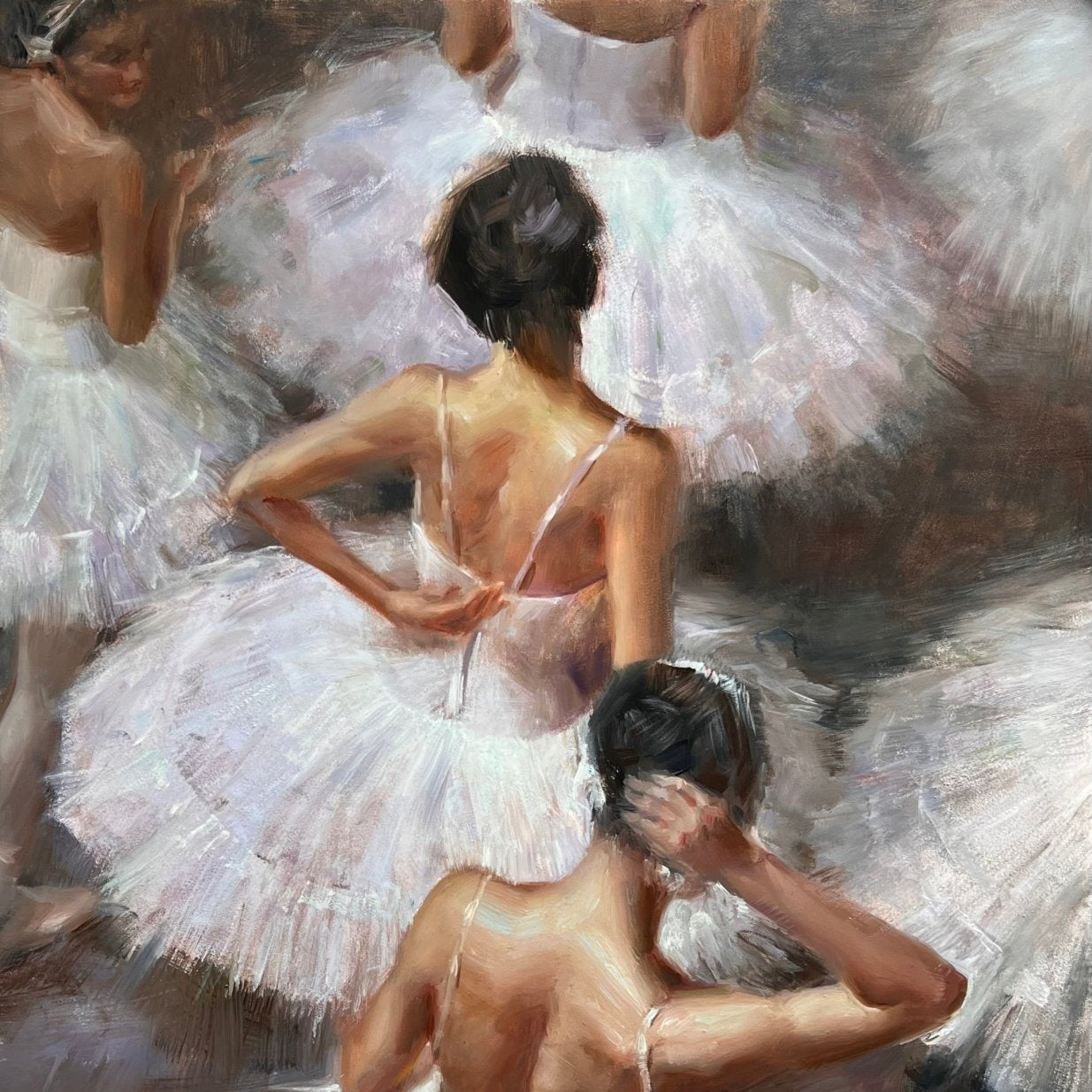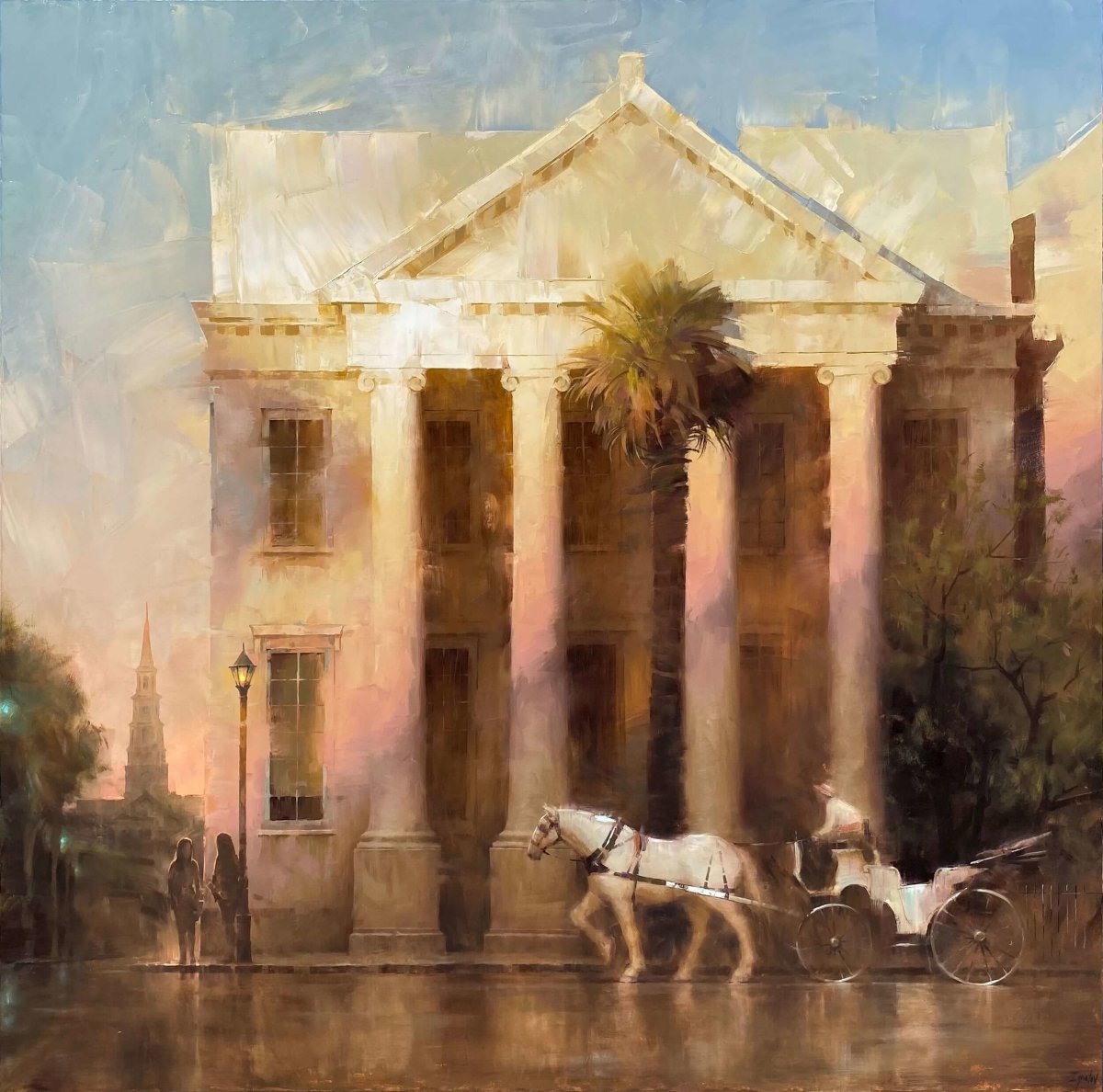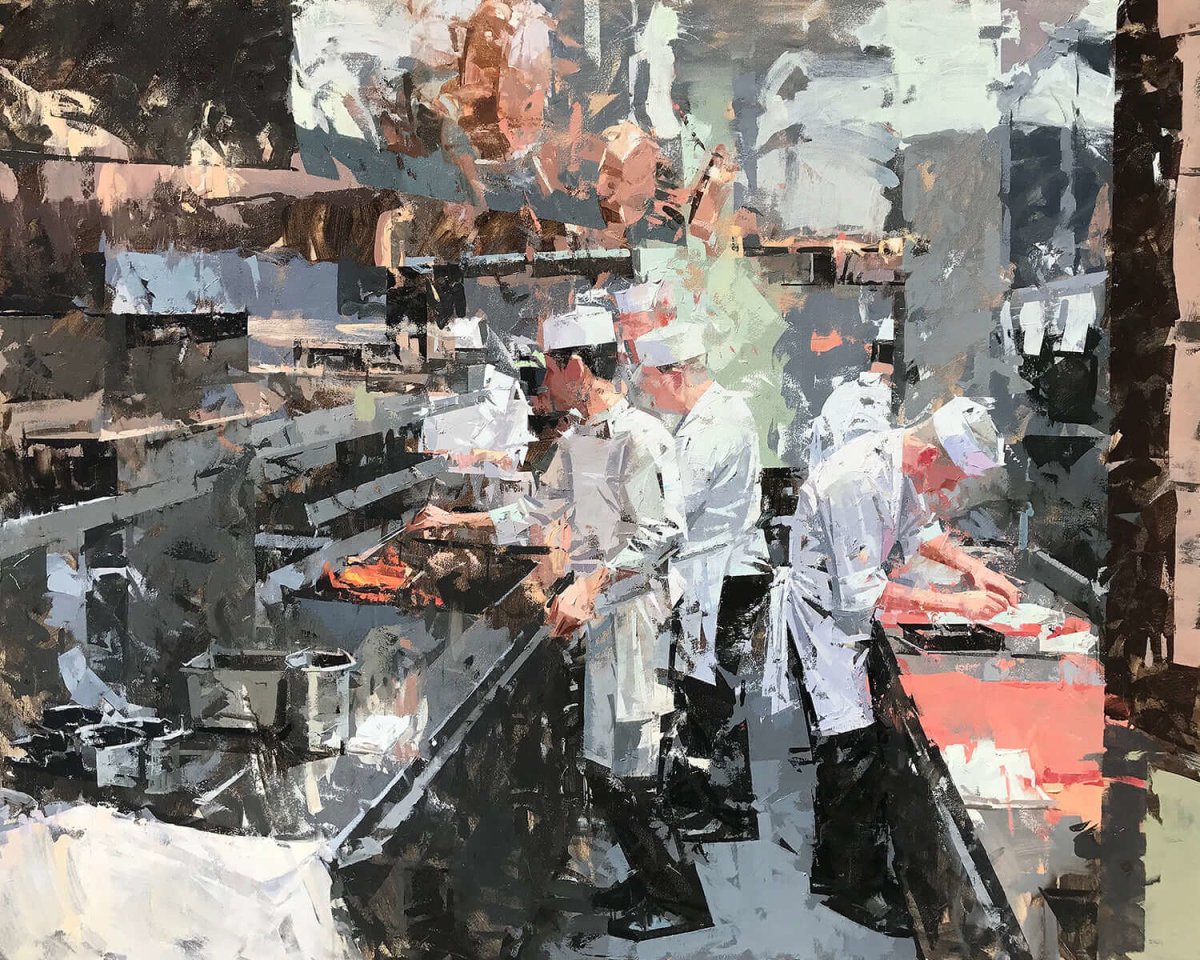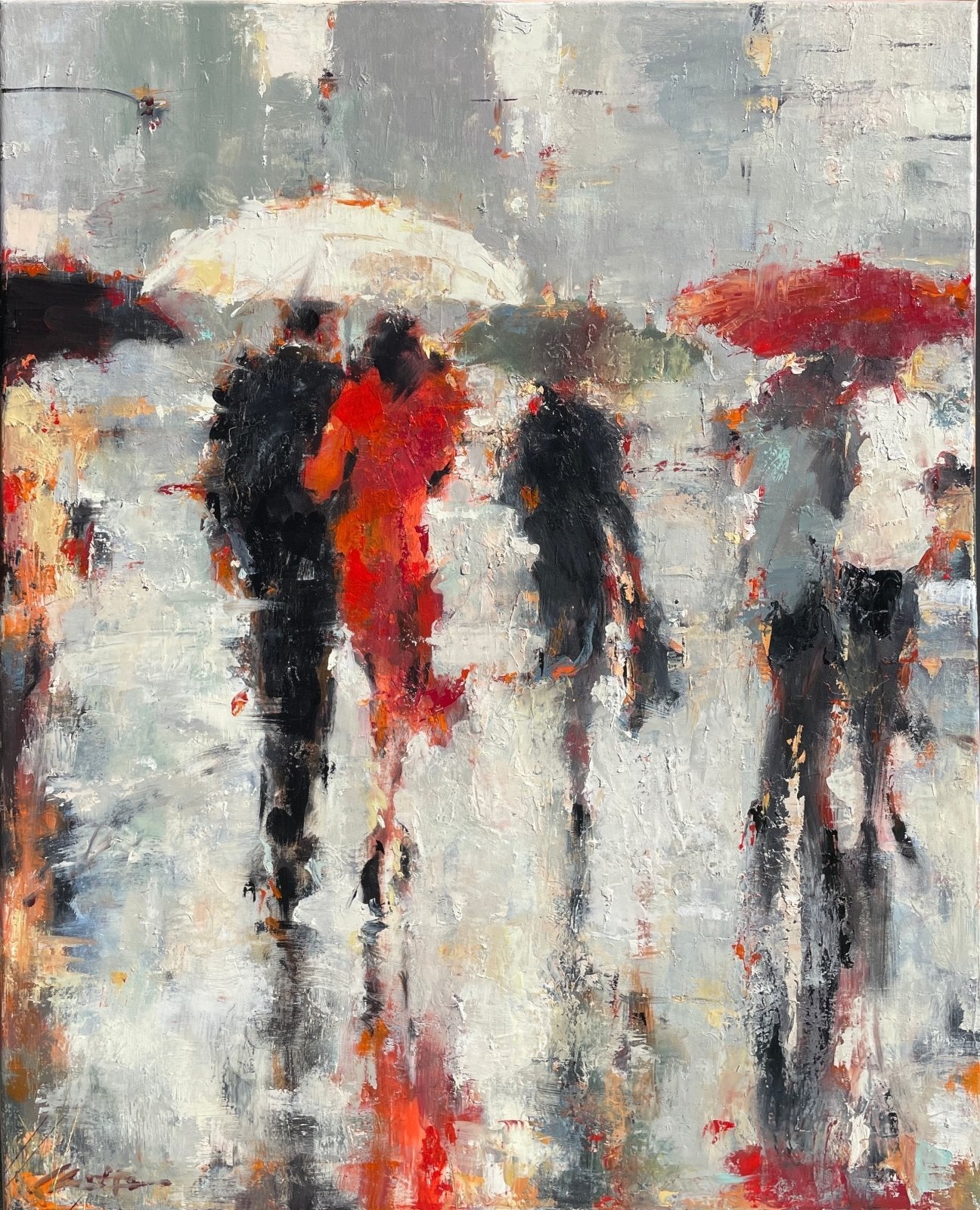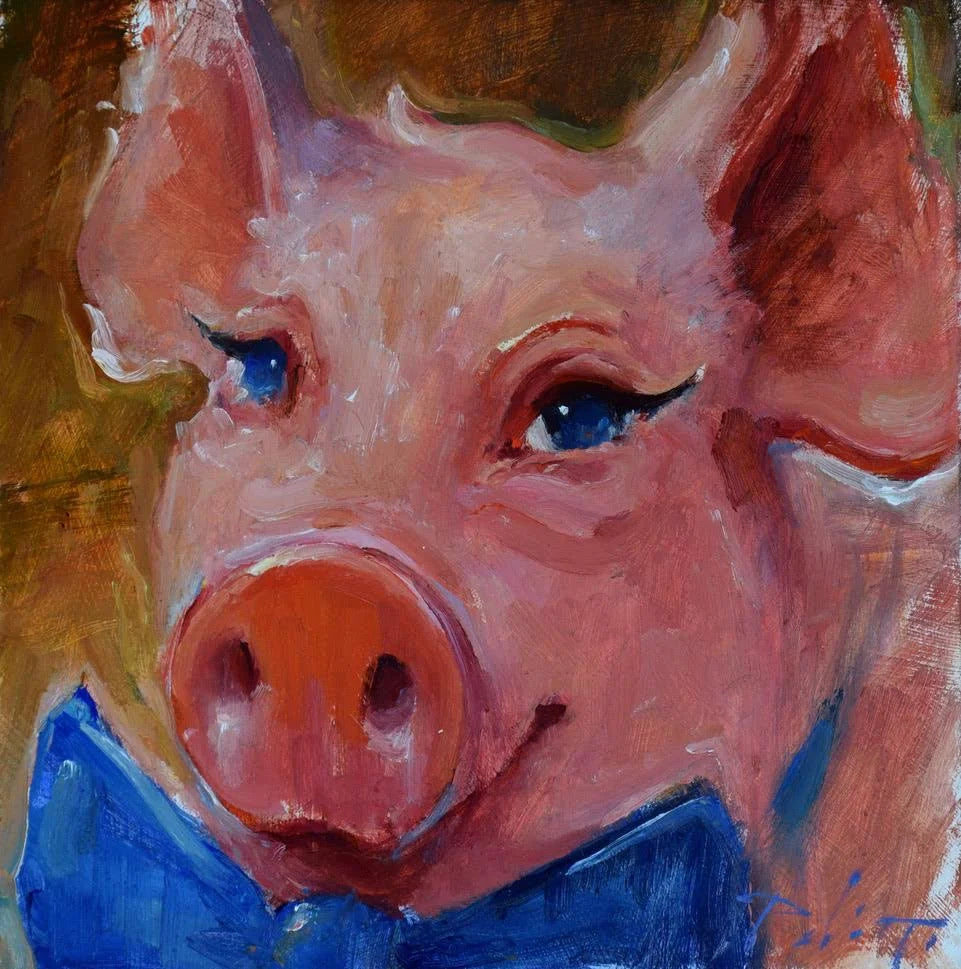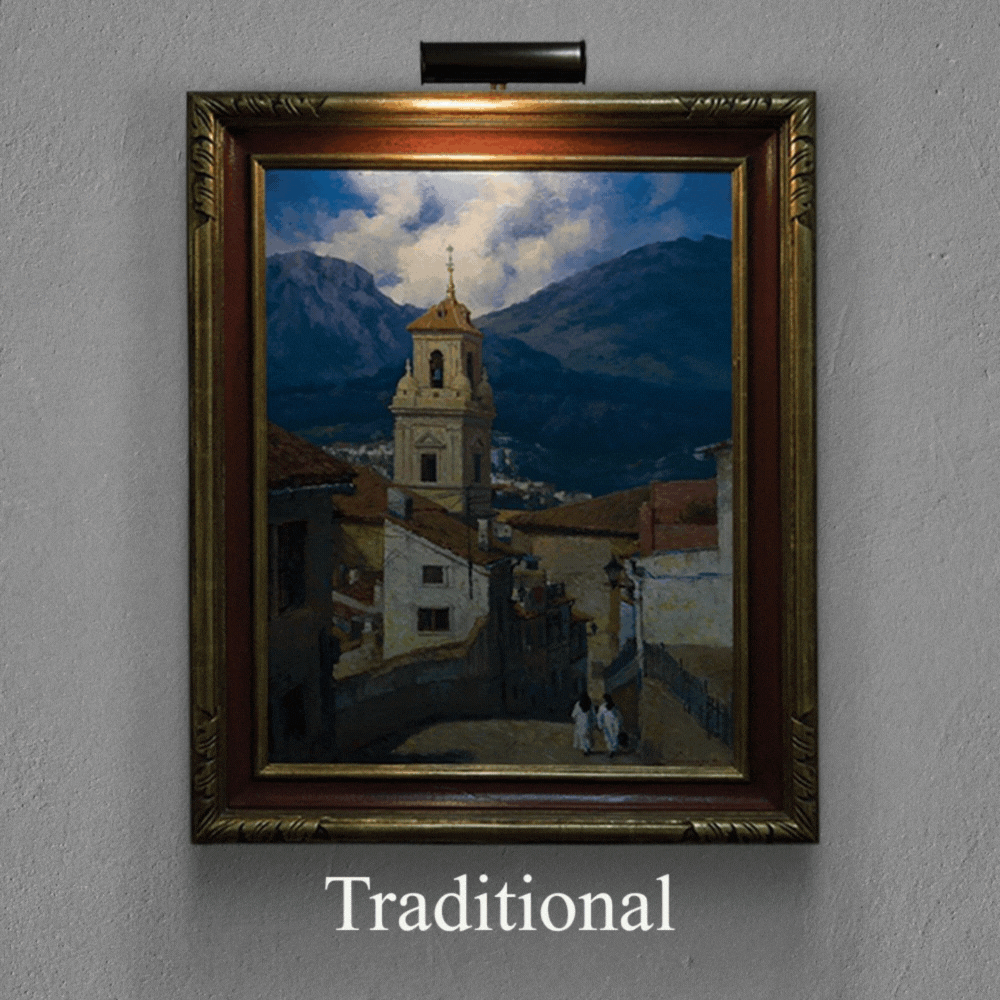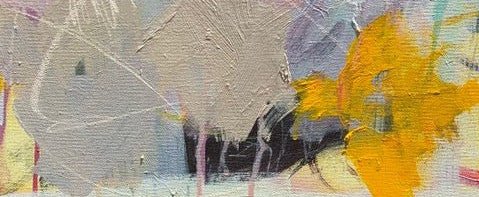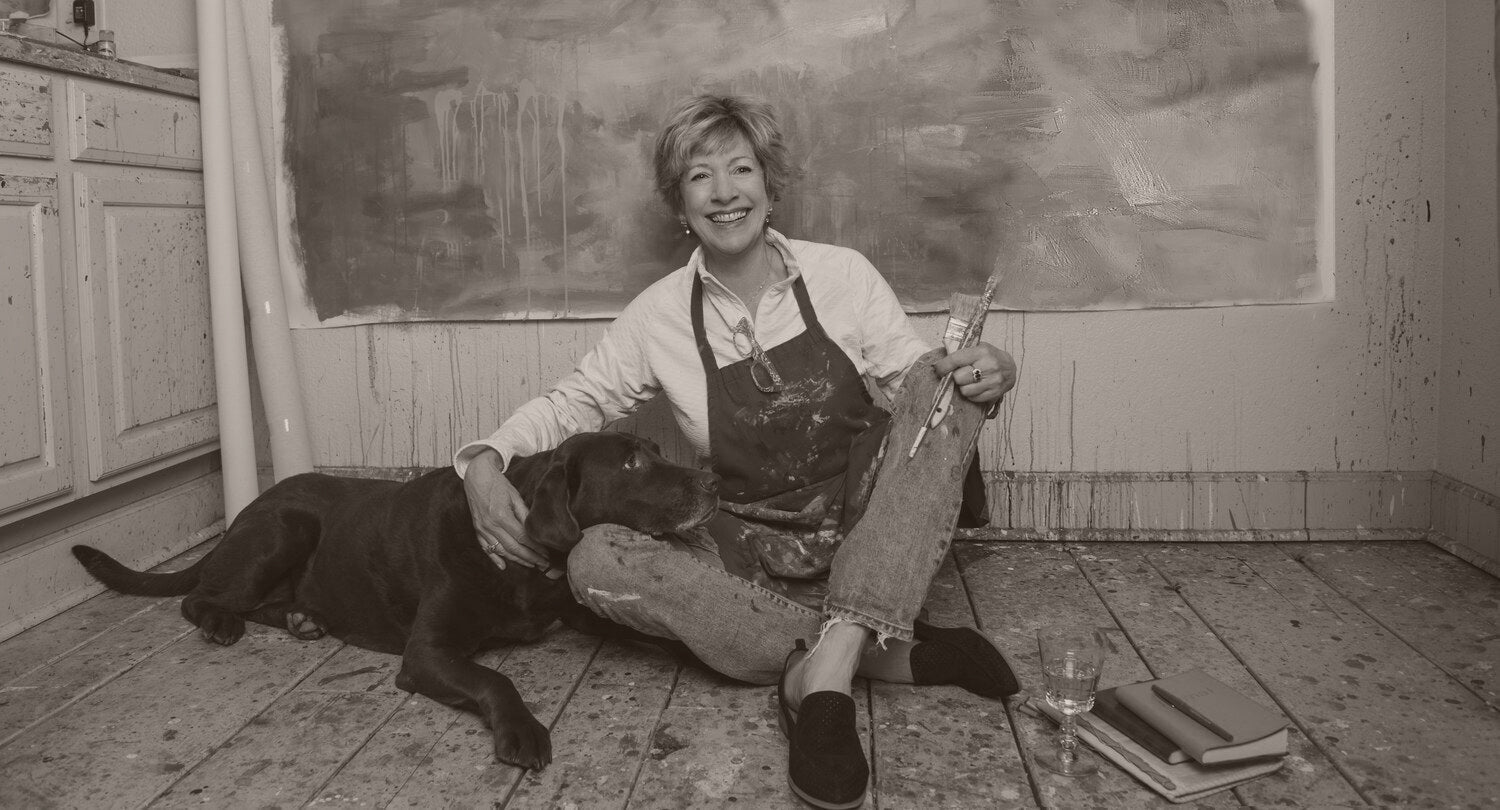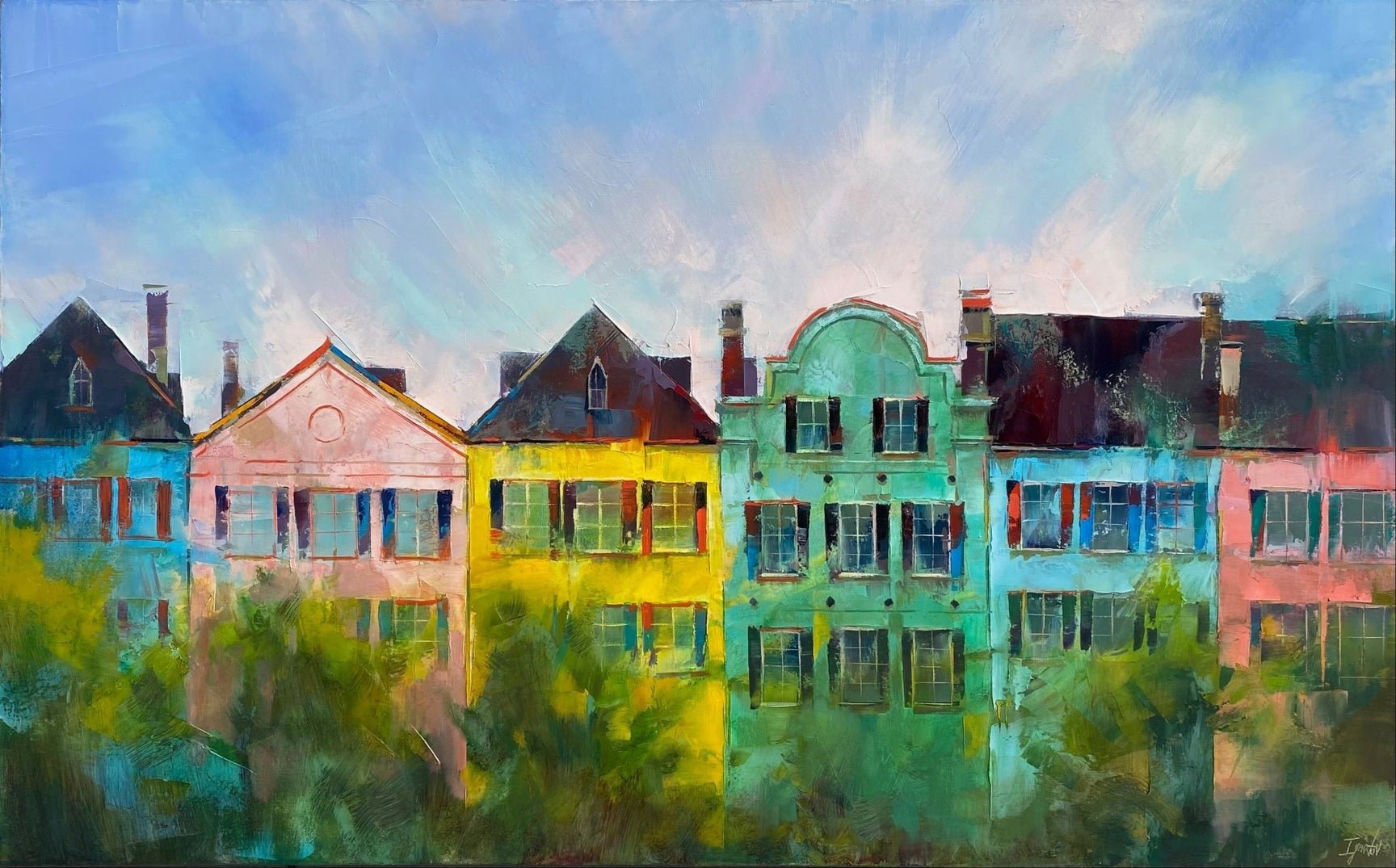The Role of Impressionism and Abstraction in Contemporary Art: Blurred Lines
In the vast and universe of contemporary art myriad styles merge to create a tableau of human creativity and expression. Among these forms, impressionist art, abstract art and gestural abstraction stand out. All evidence of the shift from representative to more emotive expression. These forms challenge the traditional understanding of visual representation, pushing emotion, concept, and process over literal depiction.
The LePrince Fine Art Gallery known for its diverse collection of contemporary art serves as an forum for such innovation. Among the many aesthetics celebrated in its walls, the gallery holds a particular passion for the power of mark-making and story telling. These two techniques are central to the abstract and gesturally abstract oeuvre.
Firstly, add the element of mark-making.
Mark-making, a basic element in artistic practice, transcends the literal brush stroke in the realm of abstract art. It is a physical act that becomes emotional and expressive. It is a dance between the artist and their canvas that goes beyond words. The gallery focuses on this rich dialogue, emphasizing the myriad forms that mark-making can take – from random lines and rhythmic scratches to soft smudges and delicate dots.
Secondly, add the element of story-telling.
Similarly, the element of story telling brings another layer of depth to their collection. While abstract art may not narrate a story in the traditional sense, it holds stories that are emotional, personal, and often introspective. The power of these stories lies not in their specificity, but in their universality - they invite viewers to find their own stories within the bold colors, dynamic shapes, and complex textures.
In the LePrince Fine Art Gallery, these techniques shine boldly in the work of modern artists. Eileen Power, an ardent devotee of full-on abstract, plays with mark-making and narratives to create pieces that pulse with energy and emotion. On the other hand, artists like Curt Butler, Deborah Hill, Kevin LePrince, and Ignat Ignatov venture into impressionism and gestural abstraction, through mark-making and story telling in ways that blur the lines between representation and abstraction.
To summarize, this journey through the gallery's collection, we'll explore the nuances of abstract art and gestural abstraction, delve into it's growth out of impressionism. Learn how artists with their unique styles shape the ever changing world of expression in the art industry.
Understanding Contemporary Abstract Art
Abstract art, in its most basic sense, is a visual language that transcends traditional representational art to explore colors, shapes, and forms as ends in themselves. It is a form that focuses on emotion and the essence of the subject over precise portrayal. Abstract art is less about showing the world as we see it, and more about offering an internal, subjective perspective. This often pulls apart the visible world into parts and suggesting concepts that may not have a visual correlation.
Abstract art emerged in the early 20th century as a reaction to the realist practices and methods that ruled in the 19th century. Pioneers of the genre, like Wassily Kandinsky and Piet Mondrian, sought to break away from the traditions of the past to create something entirely new, something that spoke to the human condition in a rapidly changing world. The style has since split into numerous sub-genres and techniques, but the core of abstraction remains a key part of modern art.
Abstract Art and Artists
When one thinks of abstract art in the context of the LePrince Fine Art Gallery, the name Eileen Power springs to mind. A full-on abstract artist, Power’s work brims with the spirit of the early creators. Her use of bold, vibrant colors and random forms to evoke feelings and thoughts as opposed to literal copies, captures the essence of the abstract idiom. Power's work speaks volumes through its complex textures and rhythms. It leaving interpretation open to the viewer, much like the intent of the original movement.
Principals Characteristics of Abstract Art
Furthermore, the bacis elements of abstract art significantly influence other artists shown in the gallery. While artists like Curt Butler, Deborah Hill, Kevin LePrince, and Ignat Ignatov venture into impressionism and gestural abstraction, their work revelas the influence of core abstract values. Whether it's Butler's carefully choosen subjects, Hill's use of color, LePrince's powerful mark-making, or Ignatov's emotive palete knife work, elements of abstract thought and execution are clearly visible.
In other words, in the modern art world, abstract art holds a critical role. It is seen as a symbol of freedom, pushing artists to break through the limits in traditional art. It drives artists to challenge the status quo, much like the LePrince Fine Art Gallery's mission to nurture diverse voices. This freedom allows artists to create a personal visual language. This can be seen in the wide ranging works shown in the gallery. These voices walk between the lines of pure abstraction and impressionism.
Gestural Abstraction in Today's Contemporary Art: A Fusion of Expressive Techniques
Gestural abstraction, a sub-genre of abstract art, places focus on the process of creation and the physical act of painting. It's often associated with the Abstract Expressionist movement of the mid 20th century. Whereby, artists like Jackson Pollock and Willem de Kooning used their canvases as an arena for action. Their aggressive brush work, sweeping strokes, drips, and splatters became the art itself, thus reflecting their emotional state and the energy of the creation process.
In the realm of gestural abstraction, the marks made on the canvas are not just representations of a subject or thought, but they carry the raw emotional intensity of the artist's movement. The gestural abstractionists believe that the energy of the artist's actions can be transferred into the artwork. Thus, they could produce pieces packed with emotion.
Gestural abstraction shares a common thread with pure abstract art in its focus on the subjective expression of the artist. It seperates itself, however, by accentuating the physical gestures and the artist's interaction with the canvas. These elements of immediate, often aggressive, movement and mark-making lend gestural abstraction its unique identity in the art world.
In the context of the LePrince Fine Art Gallery, several artists use elements of gestural abstraction into their work. Kevin LePrince's beach paintings, for instance, blend impressionistic technique with gestural abstraction. The aggressive brushwork in his paintings captures the beauty and power of the sea while the loosely applied strokes and drips lend his work an immediacy and dynamism characteristic of gestural abstraction.
Gestural Abstraction is Rooted in Impressionism
On the other hand, an artist like Ignat Ignatov, while mainly rooted in impressionism, subtly infuses gestural abstract elements in his work. His loosely applied strokes and the visible, energetic brushwork bring a sense of motion and life to his still-life paintings.
In the broader contemporary art scene, gestural abstraction continues to evolve and inform various practices. Its influence transcends the traditional canvas, impacting areas such as performance art and digital art. At LePrince Fine Art Gallery, the presence of gestural abstraction shows its vitality and relevance. The language of brush strokes, and drips, are more important than ever.

Eileen Power: Embracing the Abstract
Eileen Power, an Atlanta-based artist, weaves a rich tapestry of space, energy, and the essence of paint in her work. Though her paintings often echo the hues, light, and atmosphere of their place of creation, they delve far deeper than physical surroundings. Power's work taps into an internal wellspring, drawing from personal memories, relationships, and the emotions they evoke. In her realm of abstract, colors set the mood, while the shapes narrate the story, interplaying in a vibrant dance of abstraction.
Power's recent work represents a celebration of womanhood, exploring the dynamic interplay between femininity and strength. This exploration lends her work a distinct resonance, reflecting the social and cultural dialogues around gender and identity in society.
Self-taught
Despite being a self-taught artist with a formal education in business management, Power has been able to channel her diverse experiences and learning into her art. She's had the privilege to work with master teachers, including Ms. Chery Baird of Atlanta and Steven Aimone. These mentors enriched her artistic journey and shaping her distinct voice in abstract art.
Creating contemporary art from her studio in Atlanta, Power's work has earned awards in juried art shows throughout the Southeast. Her pieces have found their place in corporate and private collections.
At the LePrince Fine Art Gallery, Power's vibrant pieces stand out embodying the gallery's commitment to dispaly abstract art. Her use of color and form, her use of themes such as femininity and strength, and the powerful narrative inherent in her works contribute to the ongoing dialogue about the evolution and relevance of abstract art in contemporary culture. Power's work pushes them to partake in the emotive storytelling intrinsic to abstract art.
Other Artists Venturing into Impressionism and Gestural Abstractions

Deborah R Hill: Bridging the Real and the Abstract
Deborah R Hill, a classically trained contemporary painter, marries familiar subject matter with abstract elements in her artwork. Her oeuvre, marked by a noteble use of color, brush work, and paint application, creates a sense of familiarity. She also is asapt at introducing abstract notions that surprise and engage the viewer.
Her notable ongoing body of work, The Crossroads Series, centers on the concept of mobility. Monility is not merely as physical action but as a state of mind influenced by various circumstances. The series uses the horse as a symbol of mobility, because it is one of the earliest means of movement. That is to say, she presents a unique amalgamation of symbolism and abstraction.
Hill's work can be found in private and public collections across the United States and beyond. Having experience in home and commercial design she has honed her approach to visual aesthetics.

Curt Butler: The Storyteller with a Palette Knife
Curt Butler is a respected figure in the art world, known for his exceptional story telling and expressive mark-making abilities. His unique blend of bold colors, gestural brush strokes, and narratives make his artwork captivating. Butler's interest in impasto and scumbling techniques result in a sculptural quality that adds depth to his works.
His work invites viewers into a realm where realism and abstraction coexist. Butler's paintings have found a place in numerous permanent collections. In conclusion, Butler's impact on the art world will bea function of his story telling ability combined with his mark-making prowess.

Kevin LePrince: The Investment Banker Turned Impressionist
LePrince transitioned from the high pressure world of finance to the realm of fine art. Kevin LePrince has had a unique artistic journey. His success lead to the foundation of the LePrince Fine Art galleries, which show not only his own works but also the works of numerous other emerging and career artists. Working in the intersection of impressionism and abstract expression, he continues to evolve as an artist.
LePrince's style, shaped by his training under Charleston impressionist artist, John Carroll Doyle, is marked by beautiful strokes. His subjects depict the simplicity and beauty often found in the South. Despite having formal art studies, LePrince has excelled as a talented mak-maker. His commitment to his craft has seen his work published in numerous art magazines and collections.

Ignat Ignatov: Merging Representation and Abstraction
Ignat Ignatov's journey tells the story of a constant search for the confluence between the real and the abstract. Ignatov was born in Bulgaria and imbued with a passion for art at a young age. Ignatov honed his talents at an art school in Tryavna, Bulgaria. His education in classical European techniques, particularly the old cross hatching technique, armed him with a strong foundation in representational art, a style that influences his work to this day.
Moving to the United States
His move to the United States in 1997 marked a period of experimentation and growth. Working as a sculptor for Hollywood studios, Ignatov developed a refined sense of form. He learn to capture the essence of his subjects in a way that transcends the physical. His work in this field expanded his understanding of art. As such, he found the delicate balance between realism and abstraction that defines his style today.
Further enriching his artistic landscape, Ignatov engaged in continuous learning at places like the California Art Institute, Associates in Art, and the American Animation Institute. His teaching stint at the Los Angeles Academy of Figurative Art allowed him to inspire the next generation of artists. His efforts prepared them to explore and experiment beyond known boundaries.
Subject Matter
Ignatov's contemporary art includes a wide range of subjects – from portraits to dynamic landscapes, and from urban street scenes to vivid still lifes. He subtly infuses elements of the abstract into his representational work, producing art that is a fascinating fusion of the real and the imagined. His work reveals the influence of masters like Nicolai Fechin, John Singer Sargent, Anders Zorn, and Joaquin Sorolla, while also offering his unique vision and direction.
What about awards?
Ignatov has recieved numerous awards. For example, the "Award of Excellence" at the California Art Club's 95th and 98th Annual Gold Medal Juried Exhibitions are testaments to talent. He also became the feature artist at the Huntsville Museum of Art in Huntsville, AL in 2020.
As a result of living in Charleston, Ignatov has found an abundant array of subjects. He continues to push the envelope of his paintings, often diving into the realm of the abstract. His recent works include local marshes, beaches, and city streets. These pieces are often painted on location or from photos. Each one is a testament to his ability to see beyond the literal and interpret the world through his lens. Through his continued growth as an artist, Ignatov stands out as a beacon for those who seek to merge the representational and the abstract in art.
In these four artists we see a collective embodiment of the changing world of abstract art, impressionism, and gestural abstraction.
In conclusion, LePrince has crafted a space where visitors can experience an array of moden contemporary artistic styles, and engage with different narratives. Appreciating the shared exploration of form and color is easy when in the galery. From the abstract work of Eileen Power to the gestural abstraction of Deborah Hill, the bold marks of Curt Butler, and the representational-abstraction fusion of Ignat Ignatov, the LePrince Fine Art Galleries are a melting pot of methods.
The venues serve as a reminder of the interconnectedness of the art world and the collective journey of artists. As a space that celebrates the diversity of expression, the LePrince Fine Art Galleries are a beacon of creativity and innovation. Visitors are invited to explore the vast universe of contemporary art.


